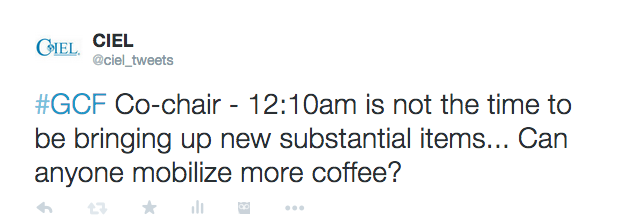
Last month, the Board of the Green Climate Fund (GCF) met in Barbados for its 8th session. What’s the GCF? It’s a financial institution that is expected to channel billions of dollars to developing countries to help them in their efforts to mitigate and adapt to climate change. (Check out some of our blogs for more info!). At CIEL, we work to ensure that the rights and interests of those affected by activities funded through the GCF are protected; this includes working on measures to avoid social and environmental harm (safeguards), enhancing public participation, and ensuring that the GCF has a robust mechanism to address complaints from affected or potentially affected people (redress mechanism).
These issues come into sharp focus when dealing with REDD+
(Reducing Emissions from Deforestation and Forest Degradation), an initiative that promotes (gives money for) the protection of forests by recognizing the vital role they play in addressing climate change. The GCF will funds to both mitigation and adaptation activities, including other forest-related, land use, and agriculture efforts that reduce emissions. The UN Framework Convention on Climate Change (UNFCCC) has already established a REDD+ framework and the GCF intends to fund REDD+ activities. This is natural given that the GCF was created by the UNFCCC. To that effect, the GCF Board agreed to adopt a decision that addresses how the outcomes/results of REDD+ activities contribute to the GCF’s objectives, which in turn helps the Board decide which activities to invest in.
With the guidance that already exists at the UNFCCC (though we need more guidance on safeguards at the Lima climate conference and here’s why!), you would think that this would be a relatively easy task. But not so. The first draft GCF decision was far from consistent with the UNFCCC REDD+ framework. After many excruciating hours, the Board finally managed to improve the decision (thanks to some key developing countries).
As with any difficult journey, there are many lessons to be learned. Now that the excitement around financial pledges to the GCF has passed, we thought we would share some reflections from the Board meeting:
If you’re going to address REDD+ in a decision…
DON’T get the basic terminology wrong and then spend hours fighting over whether to fix it. There are five basic REDD+ activities, and one of them is sustainable management of forests (SMF). The draft GCF decision on REDD+ results mentioned sustainable forest management (SFM) instead. Not a big deal, right? WRONG! It’s not just mind-numbing nitpicky lawyering. The UNFCCC spent two years negotiating which term should be used because the concepts cover different kinds of activities. SFM had the potential to allow “sustainable logging” (an oxymoron if I ever met one) to count as reducing emissions from cutting down trees and people fought hard to keep that out of the UNFCCC definition. Sure, clerical errors happen, but then the polite thing to do is to acknowledge the mistake and learn how to “find and replace.” (hint: it’s Ctrl+F)
DO read the relevant UNFCCC REDD+ decisions, but…
DON’T ignore the bits of those decisions that you don’t like. Yes, the UNFCCC emphasizes cutting emissions as a result of REDD+. But it also says that promoting the other environmental and social benefits that come from protecting forests is essential for the scheme to succeed (the issue of “non-carbon benefits” is currently being discussed at the UNFCCC, so we’ll see how that language evolves). Initially, the GCF REDD+ decision was only focused on emissions and did not even acknowledge this more holistic approach. Some say it’s too complicated and will overburden REDD+. We understand that a holistic approach is complicated, but, well, forests ecosystems are complex. Simplifying it on paper doesn’t change reality. Thankfully, now it is noted that the decision is a work in progress and will need to be updated. But still, current decision = opportunity missed.
DO reference the UNFCCC REDD+ framework in the decision on REDD+ results, but…
DON’T forget to incorporate relevant requirements (like REDD+ safeguards) in your overall framework. REDD+ safeguards contain important rights and biodiversity protections that go beyond the GCF’s current interim safeguards. “How will anyone know what requirements they actually have to meet to get REDD+ funding through the GCF?” you might ask. We’re asking the same thing!
DO revise the draft decision in the hope of improving it, but…
DON’T introduce it for adoption at 11:50pm, 10 minutes before closing an already delayed meeting. We actually thought it was a joke.
Finally, we wish we could actually link to the final decision, but over a month later the full GCF decisions are not available online.
Originally posted on November 27, 2014.

